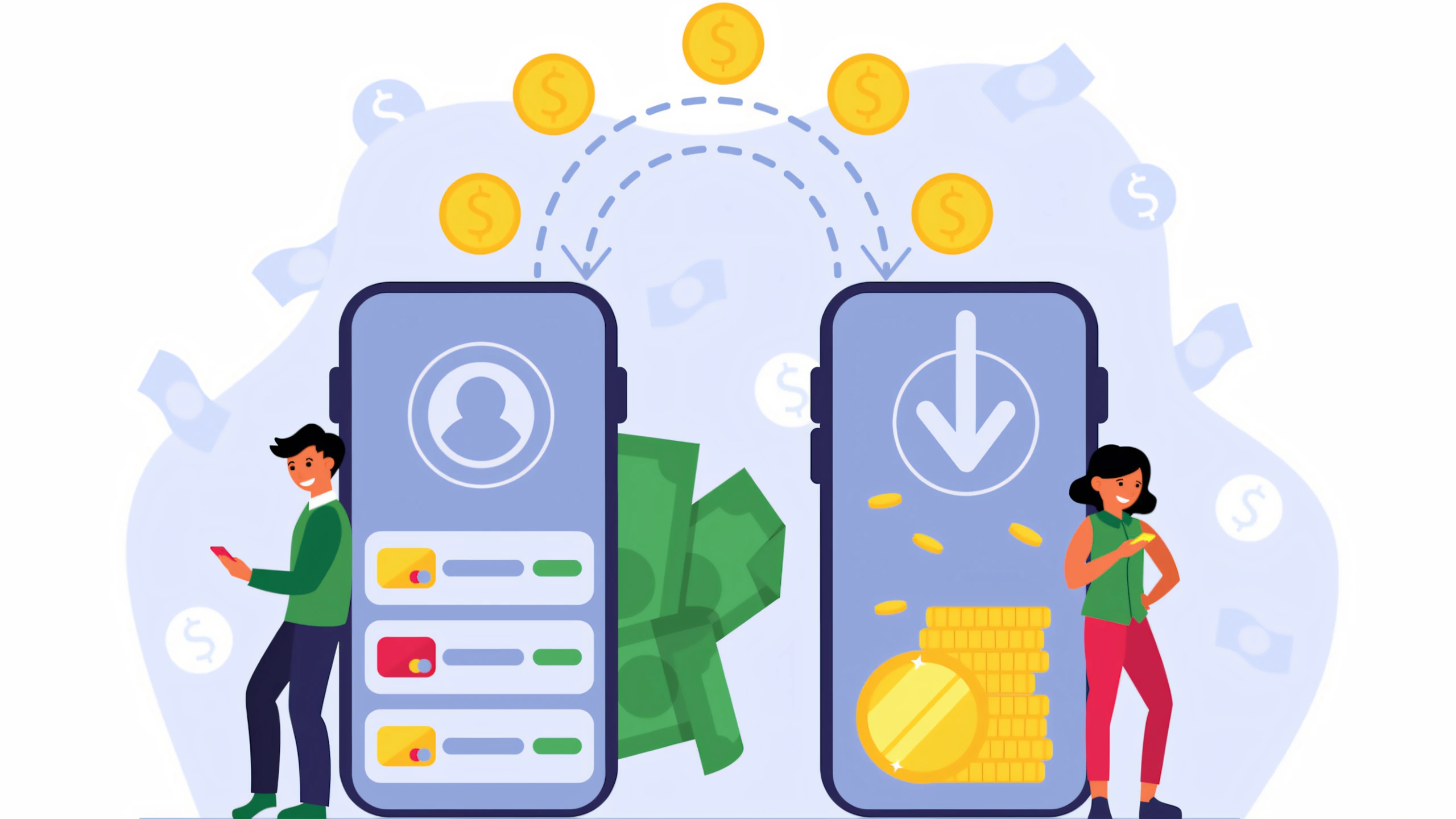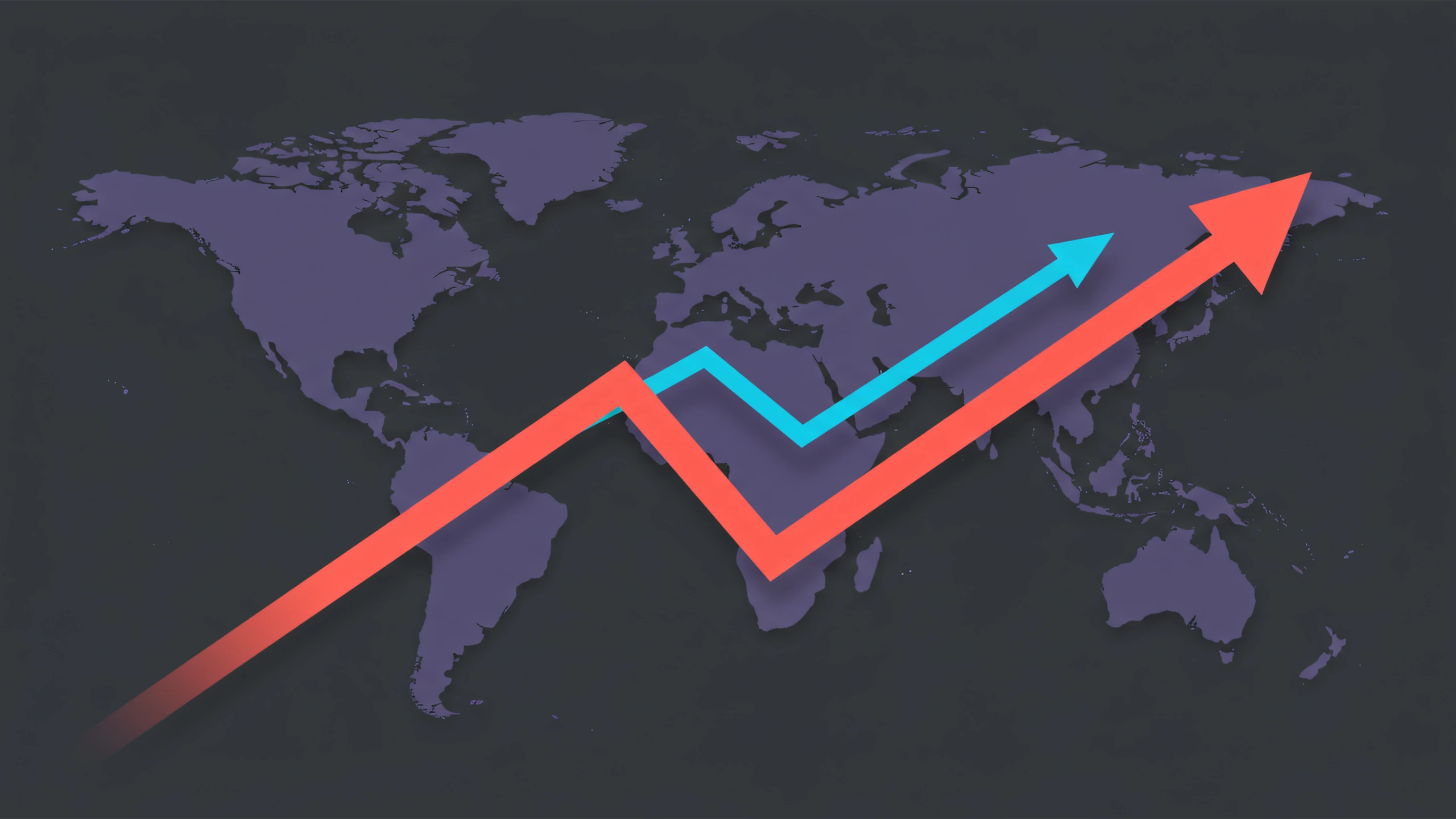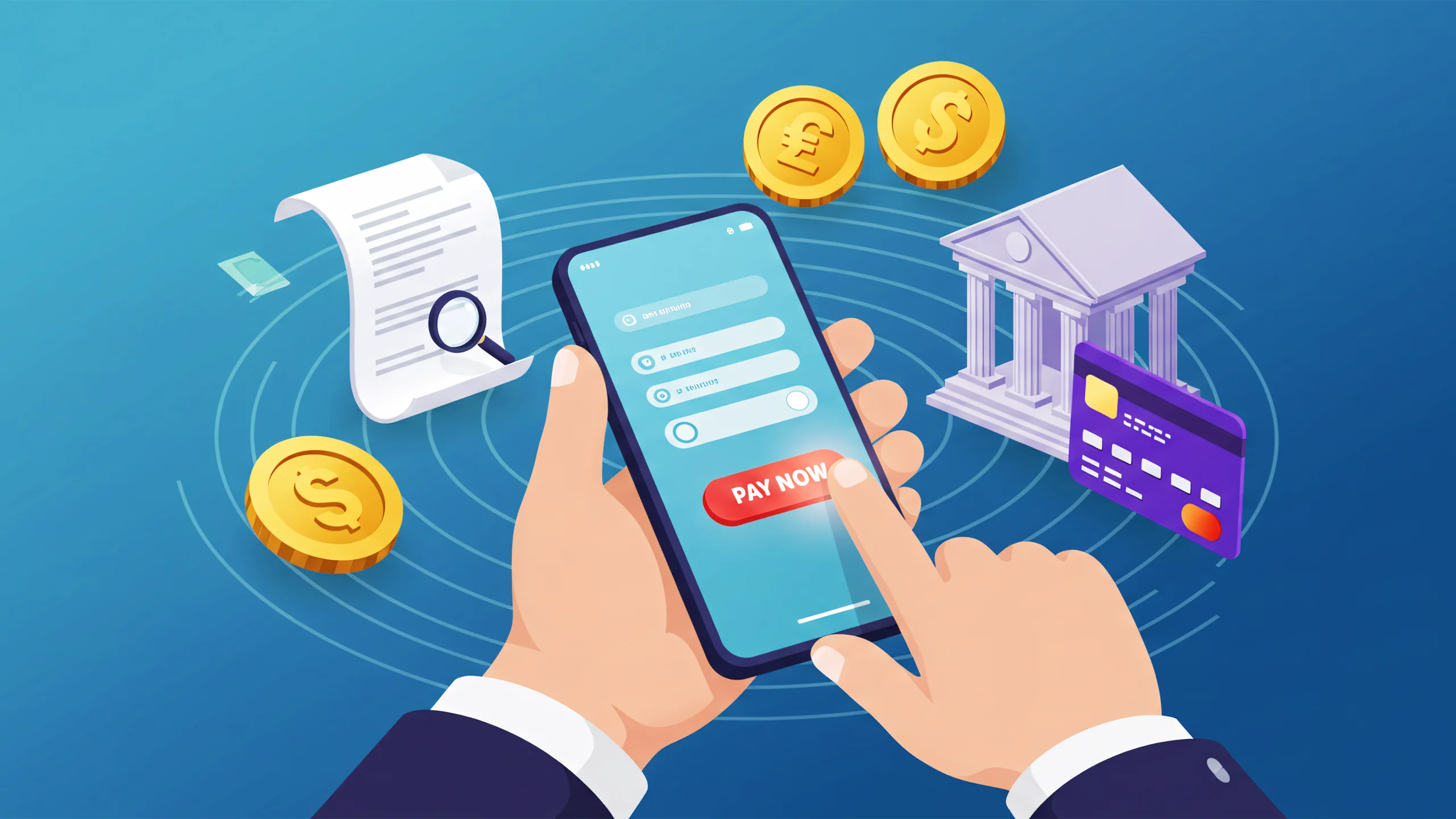What happens when money no longer needs banks to move, store, or grow?
Digital payments and central bank digital currencies (CBDCs) eliminate the need for intermediaries by enabling fast, secure, and programmable transactions. They reduce friction, expand financial access, and allow governments and consumers to interact with money in entirely new ways.
Apple vs Banks: The Race to Lead Digital Payments
How Digital Payments Are Reshaping Global Finance
Remember when cash was king? Today, many of us rarely use physical money. This shift is reshaping economies worldwide.
Digital payments include transfers, mobile payments, and online shopping. They build financial records, expand access to commerce, and offer banking to underserved populations.
The World Bank reports that digital payment adoption grew from 2014 to 2021. In developing economies, adults using digital payments increased from 35% to 57%. In advanced economies, it rose from 88% to 95%. Additionally, over 40% of adults in developing economies (excluding China) paid merchants for the first time.
The growth of cashless transactions and mobile payments reflects the rapid rise of the digital economy. As more people use digital wallets, businesses are evolving to meet this demand.
Top Digital Payment Methods for Every Need
The digital payment ecosystem includes several distinct methods serving different needs:
- Mobile Wallets: Services like Apple Pay and Google Pay transform phones into payment devices using secure NFC technology.
- P2P Payment Apps: Venmo, Cash App, and Revolut enable direct money transfers between individuals—perfect for splitting bills or reimbursing friends.
- Contactless Cards: These use RFID or NFC technology for tap-and-go transactions, eliminating the need to swipe or insert cards.
- QR Code Payments: Especially popular across Asia, these systems generate unique codes that transfer funds when scanned.
Each method balances security, convenience, and accessibility differently, making them suitable for various situations and user preferences.
How Digital Payments Are Becoming More Secure
Digital payments are evolving rapidly to tackle fraud and enhance user trust. Here are the top innovations strengthening their security:
1. Tokenization
Instead of transmitting actual card numbers, payment systems generate unique one-time tokens. This renders intercepted data useless and prevents unauthorized reuse.
2. Biometric Authentication
Technologies like fingerprint scans, facial recognition, and voice verification introduce a physical identity layer that’s extremely hard to replicate or hack.
3. AI-Powered Fraud Detection
Machine learning models now analyze transactions in real time, detecting anomalies and blocking fraud attempts faster and more accurately than traditional systems.
The European Banking Authority reports that digital payments saw sharp growth, yet ECB data show online card fraud fell by 12% due to PSD2’s Strong Customer Authentication. While overall fraud rates across digital methods have remained stable, this highlights how regulation is enhancing trust in Digital Payments and CBDCs across Europe.
What Are CBDCs (Central Bank Digital Currencies)? Explained
How CBDCs Are Redefining the Concept of Money
CBDCs represent the most significant innovation in currency since paper money. Unlike cryptocurrencies such as Bitcoin, CBDCs are issued and backed by national central banks—essentially digital versions of official currencies like the dollar, euro, or pound.
“CBDCs combine the efficiency of digital transactions with the stability and trust of government-backed money,” explains the Bank for International Settlements.
What makes CBDCs different from regular digital payments? When you use a credit card today, you’re using privately-issued money—a claim on your bank. With CBDCs, you hold the digital equivalent of a banknote, a direct liability of the central bank itself.
Over 90% of central banks worldwide are actively exploring CBDCs. China’s digital yuan (e-CNY) is already being tested in major cities, the European Central Bank is developing the digital euro, and the Federal Reserve is advancing research on a potential digital dollar.
This transformation connects directly to broader digital economic shifts outlined in our article on How the Digital Economy is Shaping Global Markets, where we explore how these innovations affect businesses and consumers alike.

The Technology Behind Central Bank Digital Currencies
CBDCs employ various technologies depending on design priorities:
Distributed Ledger Options: Some CBDCs utilize blockchain-like technologies, while others use more centralized database structures optimized for transaction speed.
Two-Tier Distribution: Most designs feature central banks issuing the currency to commercial banks, which then distribute it to consumers—preserving existing financial channels.
Programmable Features: Many CBDC designs include smart contract capabilities that enable automated execution of payment terms when predefined conditions are met.
Bank of England technical documents indicate potential CBDC systems can process over 100,000 transactions per second—far exceeding most current payment networks.
Real-World Benefits and Challenges of CBDCs
CBDCs offer several significant advantages:
Enhanced Financial Inclusion: They could provide banking services to the approximately 1.7 billion adults globally who remain unbanked.
Lower Transaction Costs: By streamlining payment infrastructure, CBDCs could reduce costs by 40-80% for cross-border transfers, according to IMF research.
Instant Settlement: Unlike current systems with multi-day clearing periods, CBDCs enable immediate finality of payment.
However, important challenges remain:
Privacy Considerations: The balance between transaction transparency and personal privacy requires careful design decisions.
Digital Divide Concerns: Not everyone has smartphones or reliable internet access, potentially creating new forms of financial exclusion.
Banking System Impacts: If consumers hold CBDCs directly rather than bank deposits, traditional banking models could face disruption.
If you’re interested in how technology is transforming other sectors, our Technology section features additional insights on digital innovation.
How Digital Payments Are Disrupting the Global Economy

Digital payments are fundamentally altering economic structures beyond simple convenience. They accelerate commerce by reducing friction in transactions and create new business models that physical cash couldn’t support.
For businesses, the Boston Consulting Group estimates digital payments save an average of 57 minutes daily in administrative time compared to cash handling—translating to significant productivity gains across economies.
The economic effects extend further:
Reduced Shadow Economy: Countries with high digital payment adoption typically see shrinking informal economies as transactions become more traceable and taxable.
Enhanced Economic Data: Digital systems generate detailed information flows that help businesses optimize operations and enable policymakers to make more informed decisions.
Changed Consumer Behavior: Research shows contactless payments tend to increase transaction frequency by 20-30% compared to cash transactions.
Global Economic Shifts from CBDC Adoption
CBDCs could amplify these effects while introducing new economic dynamics:
International Currency Competition: Well-designed CBDCs could challenge dominant currencies in global transactions, particularly for cross-border trade and remittances.
Monetary Policy Enhancement: Central banks gain new tools for implementing monetary policy, including the ability to distribute stimulus payments instantaneously during economic crises.
Financial Stability Considerations: The ease of converting between bank deposits and CBDCs could require new mechanisms to prevent digital bank runs during periods of financial stress.
The Atlantic Council notes that “CBDCs represent the most significant redesign of monetary architecture in decades,” highlighting both the opportunity and magnitude of the changes ahead.
Future Landscape of Digital Currency
The convergence of private digital payments and CBDCs points toward a substantially different financial ecosystem. Several developments appear likely:
Cross-Border CBDC Interoperability: Major central banks are collaborating on compatibility standards that could transform international payments and remittances.
Programmable Money Features: Both private systems and CBDCs are incorporating sophisticated programmable functions, enabling conditional payments and automated financial agreements.
Enhanced Identity Integration: Payment systems will connect more seamlessly with digital identity frameworks, balancing convenience with appropriate privacy protections.
By 2030, the Bank for International Settlements projects over 20% of the world’s population will have access to some form of CBDC—a remarkable shift considering none existed in widespread circulation before 2020.
Digital Financial Inclusion Potential
Perhaps the most promising aspect of these developments is their potential to extend financial services to underserved populations. The World Bank estimates digital financial solutions could bring 1.7 billion people into the formal financial system, creating substantial benefits:
Economic Empowerment: Access to payment, savings, and credit systems enables entrepreneurship and wealth building in previously excluded communities.
Reduced Vulnerability: Digital financial services provide secure alternatives to cash, which can be stolen or lost without recourse.
Lower Service Costs: Digital systems typically cost 80-90% less to operate than physical banking infrastructure, making it economical to serve customers with lower balances.
Gates Foundation research indicates comprehensive digital financial inclusion could add up to $3.7 trillion to the GDP of developing economies by 2025.
Navigating the Digital Finance Transformation
Digital payments and CBDCs represent more than technological convenience—they signal a fundamental reimagining of money itself. From changing daily purchases to potentially restructuring international finance, these innovations carry profound implications.
For individuals and businesses alike, understanding these developments isn’t just helpful—it’s essential for successfully navigating what may be the most significant transformation of money in our lifetimes.
What steps will you take to prepare for this rapidly evolving financial landscape?
Frequently Asked Questions About Digital Payments and CBDCs
What exactly is a digital payment system?
A digital payment system enables electronic money transfers without physical cash, including mobile payments, online banking transfers, and contactless card transactions. These systems use encrypted digital channels rather than physical currency exchange.
How do central bank digital currencies differ from cryptocurrency?
CBDCs are issued by national central banks as legal tender with stable value, while cryptocurrencies like Bitcoin are typically decentralized, not government-backed, and may experience significant price volatility. CBDCs operate within regulated financial systems with central oversight.
Are digital payment methods secure for regular transactions?
Modern digital payment systems employ multiple security layers including encryption, tokenization, and biometric verification. When proper security practices are followed, digital payments typically provide stronger protection than cash, which offers no recovery options if lost or stolen.
Will digital currencies eventually replace physical cash completely?
Most central banks designing CBDCs plan to offer them alongside physical cash rather than as a replacement. The European Central Bank and Federal Reserve have both emphasized that their potential digital currencies would complement, not eliminate, traditional banknotes and coins.
How can businesses prepare for increased digital payment adoption?
Businesses should invest in flexible payment infrastructure that accommodates multiple payment methods, implement robust cybersecurity practices, train staff on digital payment options, and consider how programmable money features might create new business opportunities or efficiencies.






